barrens restoration. plugging away.
On a hot August afternoon last summer, 8 volunteers worked to dig holes in the rocky, blue-green substrate at a section of ChesLen Preserve known as the Unionville Barrens. Only a few days earlier, Preserve Manager Sean Quinn, Assistant Preserve Manager David Castaneda, and Stewardship Assistant Matt Grammond had used heavy equipment to carefully scrape away the soil from a half-acre section of the barrens as part of a long-term habitat restoration project.
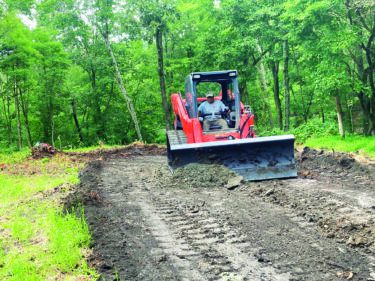 photo: Sean Quinn | 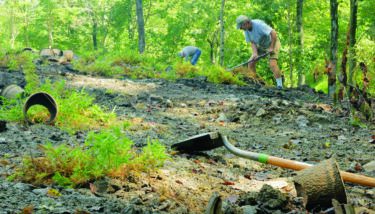 photo: Matt Freeman/mushroomcityvideo.com |
“We removed the soil layer that had accumulated over the years as trees on the edge of the barrens drop their leaves and they decompose,” said Sean. “We want to scrape until we expose the serpentine stone. Basically, we were digging holes in rock.”
The hardworking volunteers then filled these holes with nearly 200 1-gallon pots that Mt. Cuba Center, a botanic garden in Hockessin, DE, had grown from seed previously harvested from this very same grassland meadow.
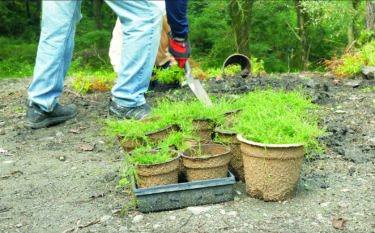 photo: Matt Freeman/mushroomcityvideo.com | 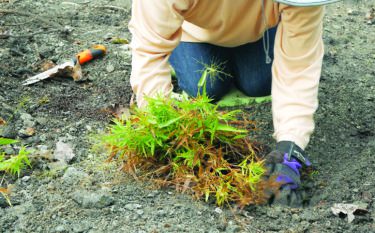 photo: Matt Freeman/mushroomcityvideo.com |
The term “barrens” was coined by farmers who long ago discovered that the soils were poor for growing crops. The presence of serpentinite—a rare metamorphic rock that was formed in a deep ocean half a billion years ago—makes the soils inhospitable to all but a few tenacious species that have adapted to these conditions. Many of these plants are rare, threatened, or endangered. At least eight plant species have died out since they were first documented at the Unionville Barrens about a century ago.
“We’ve identified 32 species of concern growing on the Unionville Barrens,” said Sean. “We want to do everything we can to help them survive, which means creating the best possible conditions for the existing barrens plants and the seedlings we install.”
In addition to mechanical soil removal, Sean and other staff members have been working to control invasive plants like autumn olive and bush honeysuckle, which displace native species. The team conducts a controlled burn of the grassland every spring, but the COVID-19 pandemic prevented this in 2020.
ChesLen Preserve
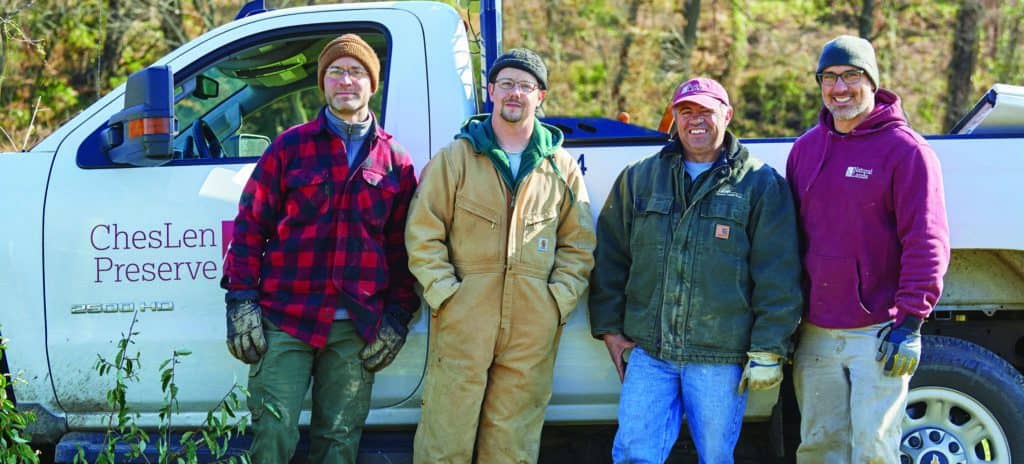
left: Sean Quinn, preserve manager, middle: David Castaneda, assistant preserve manager, right: Matt Grammond, stewardship assistant
photo: Ed Cunicelli
ChesLen Preserve’s nearly 1,300 acres of shady woodlands, flower-filled meadows, fields of corn and soybeans, and stream valleys are a stunning testimony to the power of public-private partnership—in this case a philanthropic family, a conservation-minded county, and an invested municipality.
Gerry and Marguerite Lenfest had already distinguished themselves as generous and visionary philanthropists when they decided to donate their 500-acre Chester County property to Natural Lands in 2006. That gift alone would have been extraordinary. But the Lenfests went much further. Promising lasting support for land management, Gerry and Marguerite encouraged Chester County to transfer its adjacent 500 acres to Natural Lands to create a single, publicly accessible property: ChesLen Preserve.
That promise of lasting support—augmented over the last decade by additional and generous grants from public agencies, private foundations, and corporations as well as distributions from the Jean Macaleer Fund for Chester County Preserves—is in evidence each day as preserve manager Sean Quinn, assistant manager David Castaneda, and stewardship assistant Matt Grammond lead the restoration of essential ecosystems like the Unionville Barrens, simultaneously welcoming tens-of thousands of visitors to the property each year.
